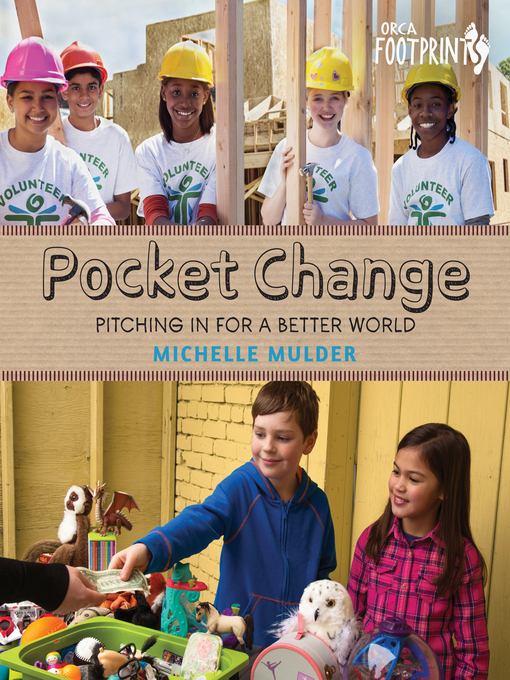
Pocket Change
Pitching In for a Better World
فرمت کتاب
ebook
تاریخ انتشار
2016
Lexile Score
1060
Reading Level
5
ATOS
6.3
Interest Level
4-8(MG)
نویسنده
Michelle Mulderناشر
Orca Book Publishersشابک
9781459809680
کتاب های مرتبط
- اطلاعات
- نقد و بررسی
- دیدگاه کاربران
نقد و بررسی

July 15, 2016
A serious recalibration of our consumerist lifestyle is in order according to Mulder in this valiant attempt to historically situate an economic practice run amok.What Mulder would really like to experience is a fundamental change in how we go about obtaining the things we need, which--as one glaring example of a malfunctioning system--many of us around the globe don't have. Her coverage of the mechanics of consumerism, such as currency, advertising, and planned obsolescence, are gripping enough to stick in readers' minds, but historical explanations--for example, the causes of the Great Depression--are way too shallow to help readers understand the basic insecurities of the system. The book is punctuated by boxes of facts and vignettes of activities Mulder has engaged in that look to a more dignified future. These include the "Repair Cafe," where local handy folk gather at some central location to repair broken goods, or the "Kitchen Library," which lends out things like blenders or a set of sharp knives. Mulder also addresses issues of vast importance: child labor laws, the microloan phenomenon, and the return of barter. Two particularly wonderful instances stand out: the first is "Buy Nothing Day," observed annually in November, and the other is an emphasis on the value of community. Ambitious in scope and mission but uneven in execution; nevertheless, valuable in its illustration of alternative models of commerce. (Nonfiction. 8-12)
COPYRIGHT(2016) Kirkus Reviews, ALL RIGHTS RESERVED.

August 1, 2016
Gr 4-7-Part condemnation of conspicuous consumption and part call for change, this selection aims to motivate readers to modify their buying habits and seek out alternative modes of energy and production. Students will be all riled up at the waste and harm current consumer culture has caused after reading about the exploitation of developing countries by Western companies. Luckily, the majority of the work focuses on ways that students can give back and even undo some of the devastation caused by mass production. Examples include joining Habitat for Humanity, petitioning for libraries to lend out additional items like tools, organizing a "freecycle" (a garage sale where everything is free), and starting a garden. Nongovernmental organizations such as the Grameen Foundation are highlighted in favorable terms. The recurring sidebar "My Two Cents Worth" offers personal stories from Mulder, which are often tangential to the main text (a tale about biking across Canada appears amid a discussion of the Great Depression). Reevaluating our idea of wealth-what it means to be wealthy and how this impacts other people-is a genuine launching point for discussion. VERDICT Although few students are likely to self-select this title, its important message makes it a solid addition for group debates on social and environmental change.-Paula Huddy, The Blake School-Highcroft Campus, Wayzata, MN
Copyright 2016 School Library Journal, LLC Used with permission.

September 15, 2016
Grades 4-7 Having tackled a variety of topics in environmental sustainability, Mulder turns to economic sustainability in this latest entry in the Footprints series. She begins by describing early humans, who carried everything they owned, and early economics involving bartering and currency. The author further relates that with the rise of the Industrial Revolution came a rise in incomeand in more stuff. While some have too much, others, including millions of children, live and work in poverty and unsafe conditions. Mulder presents alternative ways that people around the world are making ends meet, such as through small-scale loans, using libraries of resources and toys, and trading time or services with others in need. She also shows how kids are pitching in, including growing neighborhood food and volunteering with Habitat for Humanity, to help those less fortunate. Numerous color photos throughout depict these young activists in action. A final section offers more ways that children can become involved to decrease spending and increase global awareness of economic concerns. An important and accessible book for growing communities.(Reprinted with permission of Booklist, copyright 2016, American Library Association.)

























دیدگاه کاربران